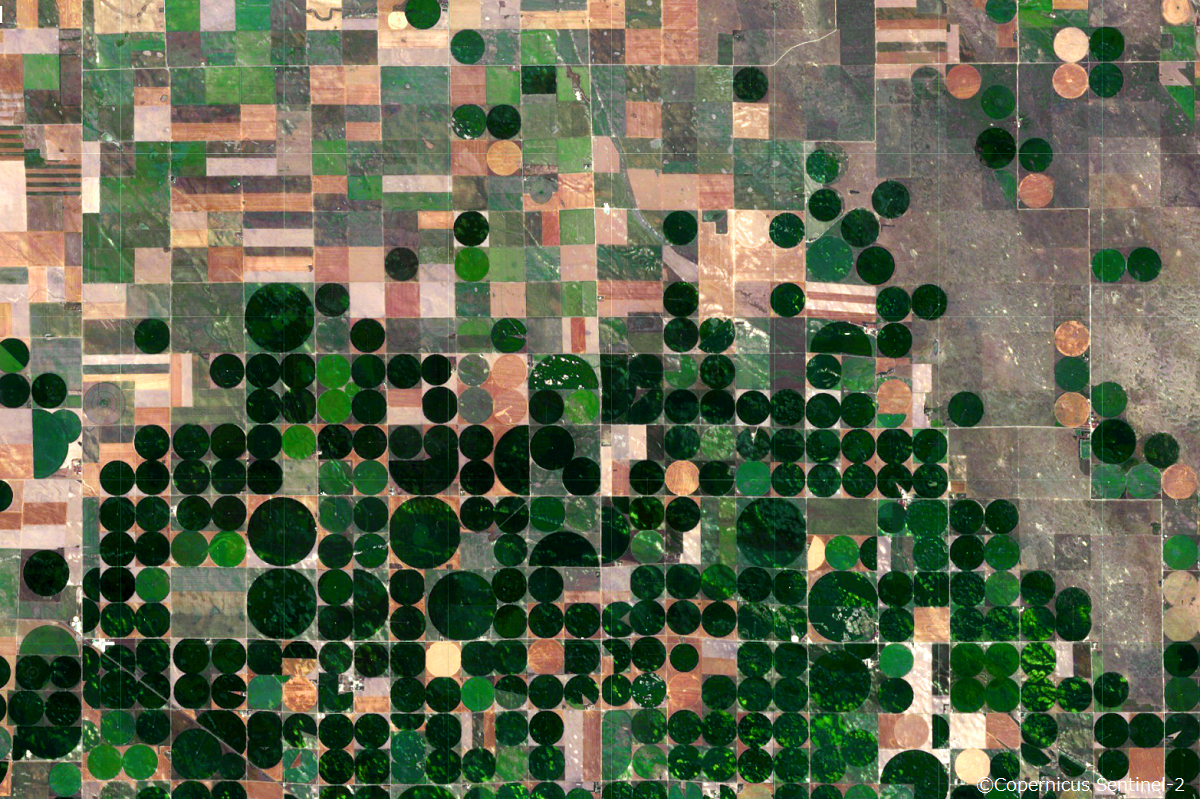Toward Sustainable Agriculture2023.04.26

The United States is one of the world's leading agricultural powers, known as the "world's food pantry.
According to data from the Ministry of Internal Affairs and Communications (MIC) in 2019, the United States has approximately 160 million hectares of agricultural land (the second largest in the world), about 36 times the area of Japan, and agriculture is carried out following natural conditions such as local climate and soil.
One of the major agricultural regions is called the High Plains, which stretches across Colorado, Nebraska, and Texas. In this arid region with little precipitation, irrigated agriculture is widespread, using artificial methods to supply water to arable land and grow crops.
With data from Sentinel-2 for summer 2021, we used VEGA to visualize farms spread across the High Plains.
Circles of various sizes are irrigated agriculture farms called "center pivot systems. Groundwater is pumped up and irrigation sprinklers rotate at the center of the circle to water crops, forming the circular farm as shown in the image.
This method has contributed to the development of large-scale agriculture by spreading in arid regions such as the United States, Middle Eastern countries, and Australia from the 1950s to the early 2000s, as it enables low-cost and efficient irrigation even in areas with few rivers and precipitation.
However, in recent years, due to problems such as lowered groundwater levels caused by irrigation, there has been a movement in many countries to discontinue the center pivot system.
For example, more than 90% of the water source used in irrigated agriculture in the High Plains is supplied by groundwater, known as the Ogallala Aquifer. It is said that groundwater is used for irrigated agriculture about three times the amount of water recharged by precipitating water and other sources, and in some areas, the water table has dropped by as much as 1.5 meters per year. It is feared that this reduction in groundwater will have a significant impact on the sustainability of agriculture in the region.
In the not-too-distant future, we may not even see these earthly circles anymore.
| Location | High Plains (United States) |
|---|---|
| Satellite | Sentinel-2/Analyzed with VEGA |
